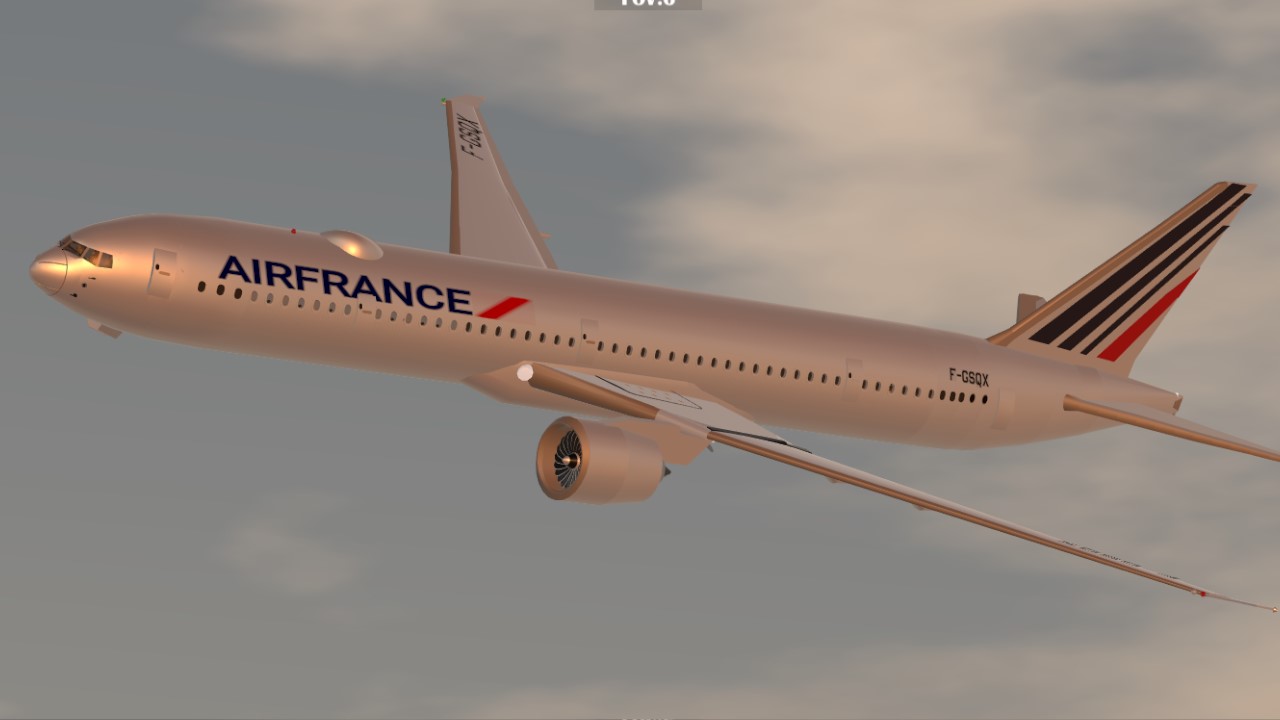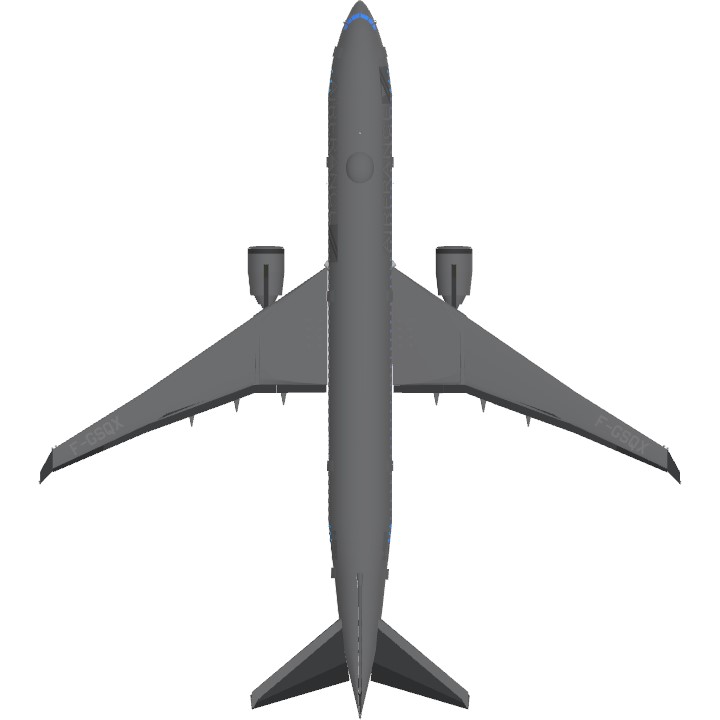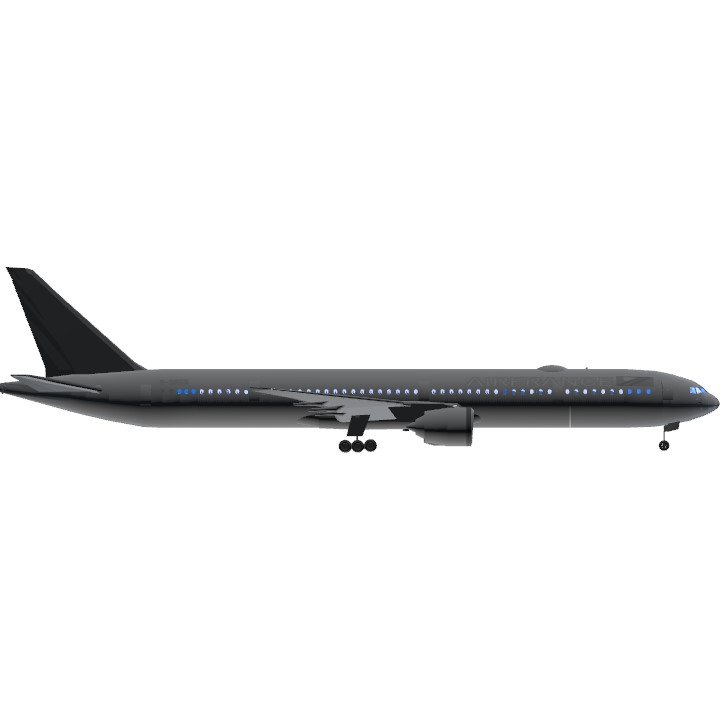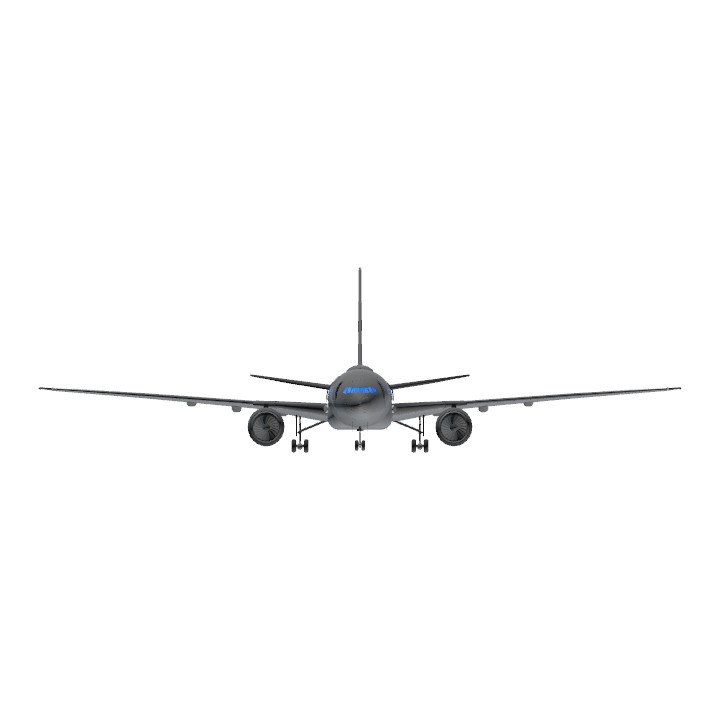[F-GSQX] AIR FRANCE Boeing 777-328(ER)
ABOUT THE TRIPLE SEVEN
The Boeing 777, commonly referred to as the Triple Seven, is an American long-range wide-body airliner developed and manufactured by Boeing Commercial Airplanes. The 777 is the world's largest twinjet and the most-built wide-body airliner. The jetliner was designed to bridge the gap between Boeing's other wide body airplanes, the twin-engined 767 and quad-engined 747, and to replace aging DC-10s and L-1011 trijets. Developed in consultation with eight major airlines, the 777 program was launched in October 1990, with an order from United Airlines. The prototype was rolled out in April 1994, and first flew in June. The 777 entered service with the launch operator United Airlines in June 1995. Longer-range variants were launched in 2000, and first delivered in 2004.
The Triple Seven can accommodate a ten–abreast seating layout and has a typical 3-class capacity of 301 to 368 passengers, with a range of 5,240 to 8,555 nautical miles [nmi] (9,700 to 15,840 km; 6,030 to 9,840 mi). The jetliner is recognizable for its large-diameter turbofan engines, six wheels on each main landing gear, fully circular fuselage cross-section, and a blade-shaped tail cone. The 777 became the first Boeing airliner to use fly-by-wire controls and to apply a carbon composite structure in the tailplanes.

The original 777 with a maximum takeoff weight (MTOW) of 545,000–660,000 lb (247–299 t) was produced in two fuselage lengths: the initial 777-200 was followed by the extended-range -200ER in 1997; and the 33.25 ft (10.13 m) longer 777-300 in 1998. These 777 Classics were powered by 77,200–98,000 lbf (343–436 kN) General Electric GE90, Pratt & Whitney PW4000, or Rolls-Royce Trent 800 engines. The extended-range 777-300ER, with a MTOW of 700,000–775,000 lb (318–352 t), entered service in 2004, the longer-range 777-200LR in 2006, and the 777F freighter in 2009. These longer-haul variants use 110,000–115,300 lbf (489–513 kN) GE90 engines and have extended raked wingtips. In November 2013, Boeing announced the 777X development with the -8 and -9 variants, both featuring composite wings with folding wingtips and General Electric GE9X engines.

As of 2018, Emirates was the largest operator with a fleet of 163 aircraft. More 777s have been ordered and delivered than any other wide-body airliner; as of October 2023, more than 60 customers had placed orders for 2,149 aircraft of all variants, with 1,721 delivered. The most common and successful variant is the 777-300ER with 837 aircraft ordered and 832 delivered. The 777 initially competed with the Airbus A340 as well as McDonnell Douglas MD-11, since 2015 it has mainly competed with the Airbus A350 and later also with the A330-900. As of August 2023, the Triple Seven has been involved in 35 aviation accidents and incidents, including 8 hull losses (three ground casualties) with 541 fatalities (one ground casualty).

Development
Background
The Boeing 777-100 trijet concept was the forerunner concept of the successful twinjet 777
The Boeing 777-100 trijet concept was proposed in 1978 to compete with other trijets of the time.

In the early 1970s, the Boeing 747, McDonnell Douglas DC-10, and the Lockheed L-1011 TriStar became the first generation of wide-body passenger airliners to enter service.[4] In 1978, Boeing unveiled three new models: the twin-engine or twinjet Boeing 757 to replace its 727, the twinjet 767 to challenge the Airbus A300, and a trijet 777 concept to compete with the DC-10 and L-1011.[5][6][7] The mid-size 757 and 767 launched to market success, due in part to 1980s' extended-range twin-engine operational performance standards (ETOPS) regulations governing transoceanic twinjet operations.[8] These regulations allowed twin-engine airliners to make ocean crossings at up to three hours' distance from emergency diversionary airports.[9] Under ETOPS rules, airlines began operating the 767 on long-distance overseas routes that did not require the capacity of larger airliners.[8] The trijet 777 was later dropped, following marketing studies that favored the 757 and 767 variants.[10] Boeing was left with a size and range gap in its product line between the 767-300ER and the 747-400.[11]
By the late 1980s, DC-10 and L-1011 models were approaching retirement age, prompting manufacturers to develop replacement designs.[12] McDonnell Douglas was working on the MD-11, a stretched successor of the DC-10,[12] while Airbus was developing its A330 and A340 series.[12] In 1986, Boeing unveiled proposals for an enlarged 767, tentatively named 767-X,[13] to target the replacement market for first-generation wide-bodies such as the DC-10,[9] and to complement existing 767 and 747 models in the company lineup.[14] The initial proposal featured a longer fuselage and larger wings than the existing 767,[13] along with winglets.[15] Later plans expanded the fuselage cross-section but retained the existing 767 flight deck, nose, and other elements.[13] However, airline customers were uninterested in the 767-X proposals, and instead wanted an even wider fuselage cross-section, fully flexible interior configurations, short- to intercontinental-range capability, and an operating cost lower than that of any 767 stretch.[9]


Airline planners' requirements for larger aircraft had become increasingly specific, adding to the heightened competition among aircraft manufacturers.[12] By 1988, Boeing realized that the only answer was a clean-sheet design, which became the twinjet 777.[16] The company opted for the twin-engine configuration given past design successes, projected engine developments, and reduced-cost benefits.[17] On December 8, 1989, Boeing began issuing offers to airlines for the 777.[13]
Design effort
A flight deck, from behind the two pilots' seats. A center console lies in between the seats, in front is an instrument panel with several displays, and light enters through the forward windows.
The two-crew glass cockpit uses fly-by-wire controls
Alan Mulally served as the Boeing 777 program's director of engineering, and then was promoted in September 1992 to lead it as vice-president and general manager.[18][19] The design phase for the all-new twinjet was different from Boeing's previous jetliners, in which eight major airlines (All Nippon Airways, American Airlines, British Airways, Cathay Pacific, Delta Air Lines, Japan Airlines, Qantas, and United Airlines) played a role in the development.[20] This was a departure from industry practice, where manufacturers typically designed aircraft with minimal customer input.[21] The eight airlines that contributed to the design process became known within Boeing as the "Working Together" group.[20] At the group's first meeting in January 1990, a 23-page questionnaire was distributed to the airlines, asking what each wanted in the design.[9] By March 1990, the group had decided upon a baseline configuration: a cabin cross-section close to the 747's, capacity up to 325 passengers, flexible interiors, a glass cockpit, fly-by-wire controls, and 10 percent better seat-mile costs than the A330 and MD-11.[9]

avez un bon vol!!!
Specifications
Spotlights
- RicardoACE 1.4 years ago
- Bryan5 1.4 years ago
- Tingly06822 1.4 years ago
- Zerkk 1.4 years ago
General Characteristics
- Created On Windows
- Wingspan 216.5ft (66.0m)
- Length 242.3ft (73.8m)
- Height 62.4ft (19.0m)
- Empty Weight 393,156lbs (178,333kg)
- Loaded Weight 695,495lbs (315,471kg)
Performance
- Power/Weight Ratio 0.775
- Horse Power/Weight Ratio 0.017
- Wing Loading 113.0lbs/ft2 (551.5kg/m2)
- Wing Area 6,157.0ft2 (572.0m2)
- Drag Points 50515
Parts
- Number of Parts 1812
- Control Surfaces 11
- Performance Cost 10,087





@Cirno9
@ZerkkZxe
@LM0418
@Ikuomola
@DatMaluchGuy19
@Tingly06822
@Transair56
@ShiinaGlassyACM
Requested Tags:
@ToeTips
@Bryan5
@TheLoneliness
cool
Your article was very interesting to me. It enriched my understanding and broadened my perspective on the subject. papa's freezeria
Excellent work
Cant wait for this to hit front page!
nice, I’d recommand making doors like galactic asia tho since they are more likely realistic and doesn’t ruin the interior